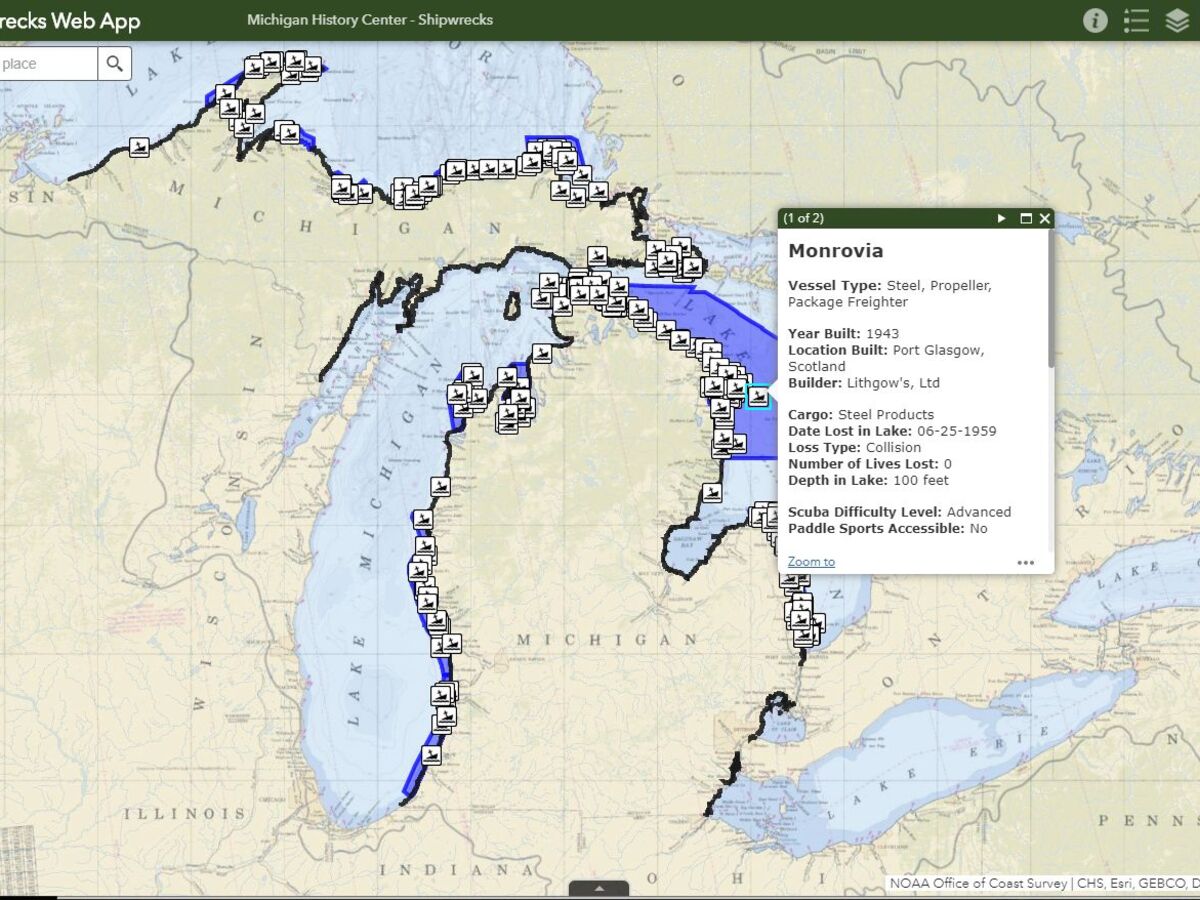Image


Some wrecks, such as the wooden bulk freighter Daisy Day, lie in as little as 10 feet of water and are suitable for beginning divers and visible to paddlers and snorkelers.
Others, such as the Indiana, a propeller vessel that went down in Lake Superior in 1858, are in more than 100 feet of water and require advanced diving skills.
The map will be updated as more ships are discovered and more information becomes available.
Users may notice that some high-profile wrecks, such as the Carl D Bradley, which sank in Lake Michigan in November 1958, are not listed. Because crew members went down with these ships, they are considered underwater burial sites.
Clark reminds the public that Michigan law prohibits removal of any artifacts from shipwrecks.
“The wrecks on the Great Lakes bottomlands belong to the people of Michigan,” she said. “If everyone follows the rule of ’take only pictures and leave only bubbles,” we can ensure that these underwater time capsules will be available for future generations to explore, research and enjoy.”
Visit and explore both the storymap and public web app at Michigan.gov/ExploreShipwrecks.

Patchy moderate snow, with a high of 34 and low of 29 degrees. Don't forget your umbrella! Partly Cloudy during the morning, overcast in the afternoon and evening, clear overnight.
Career congress person, paid for by tax dollars. Never had a private job. Spend spend spend, is she as rich as Nancy Pelosi another crooked politician . Detriot will elect her I'm sure.
Not as rich as the Krypto King!